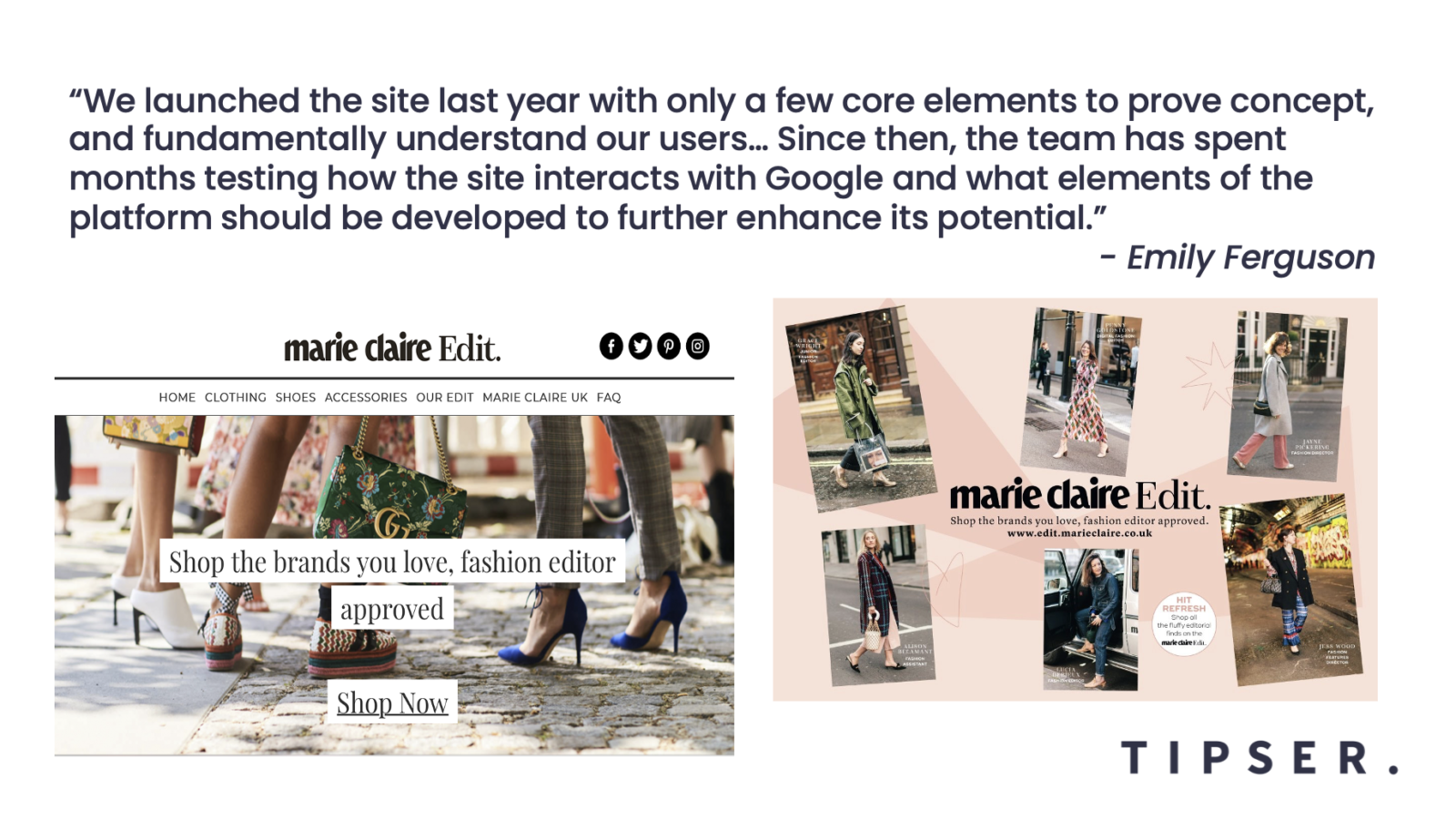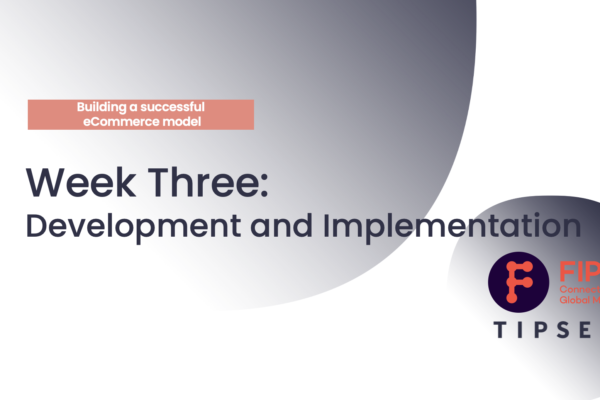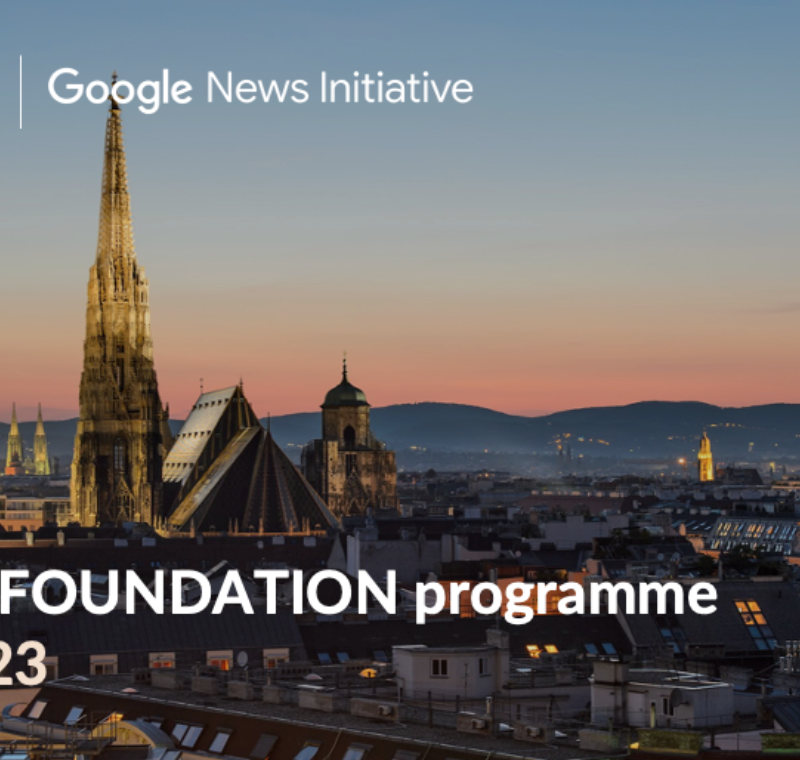FIPP and Tipser’s e-commerce course Week 3: Development & Implementation
Week 3 of the FIPP and Tipser e-commerce training course turned its attention to development and implementation, looking at how successful media companies implement such offerings, including maintaining editorial and journalistic integrity in the process, understanding the roles and skills required, and the importance of tech platforms in a successful roll-out.
Damian Radcliffe was joined by Allan Reventhell, Product Manager at Tipser, and Emily Ferguson, Director of E-Commerce at Marie Claire UK & US. In opening the session, Damian emphasised the importance of taking pragmatic steps towards success:

“You could argue, ‘Go big or go home’, but I think actually when it comes to e-commerce there’s a merit in trying to start small. This means looking at ways in which you can implement e-commerce as a logical brand extension, that aren’t too much of a lift in the first place, particularly if there is a resistance and a hesitancy and you are unsure how your audience is going to react to this. It’s useful therefore to look at where the opportunities are for a good cultural fit.”
“It’s also important to look at what are some of the things you can offer that are unique. So one really great example of that is around archive content and content specialisms, and looking at the type of material you’re producing that will often lead to a purchase and a purchase decision. If you know that your content is producing that sort of inspirational transactional journey, but the purchase ends up being made offsite with someone else, then the logical next step is to implement e-commerce.”
In his presentation, Allan Reventhell began with a question: “What is your context?”
“Most of you are probably here because you are responsible to some extent for some services, which are visited by a lot of traffic. It’s important to just conclude here that the reason those people are visiting your service is because they are looking for some form of inspiration. And it is possible to use technology to create a whole new economy around your experiences in creating inspiration on your site.”
“Among our customers, the ones who have really mastered this skill are seeing really interesting statistics where they are managing to create inspiration to such an extent that up to 70% of the ‘Add to Cart’s’ that are happening are actually resulting in purchases. So in other words, the more inspiration you can create on your site and push people towards the cart, the more likely they are to complete the purchase.”

Emily Ferguson broke down the differences between marieclaire.com and the company’s online shopping experience, Marie Claire Edit, as well as how the two platforms work together within the wider e-commerce ecosystem.
“In the UK, we have the Marie Claire Edit, which is our fashion aggregator. That brings together 55 different stores so that users can shop in the one place. It allows Marie Claire to expand its key shopping terms, so we rank for things like Gucci trainers, Chloe dresses, and it gives us the ability to expand and get a new customer, and to reach customers in a different way.”
“So the shopping experience turns from very inspirational on marieclaire.co.uk, to very focussed on Marie Claire Edit. Because people come to us through search, and the searches are very granular, so they’re very focussed on searching for that particular product. That means we get a higher conversion rate as well. And the average order value is also a lot higher, because they’re further down the e-commerce journey.”
You can find out more about the course here.










